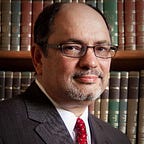History of The Beatles — All You Need Is Love
On June 25, 1967, The Beatles released the song “All You Need Is Love.”
At that time, they participated in the Our World TV show, which used the recently constructed satellite system and broadcast their performance across the globe. Beatles drummer Ringo Starr said later,
“It was the first worldwide satellite broadcast ever,”
Impact
With “All You Need Is Love,” the Beatles released the anthem of flower power — during the Summer of Love — as I’ve written previously about the prominence that summer of their recently released album Sgt. Pepper’s Lonely Hearts Club Band.
It was broadcast live on TV in 24 countries to over 400 million viewers. The single was later included in the U.S. version of the album Magical Mystery Tour, and in the animated movie Yellow Submarine. Since 2009, Global Beatles Day, an international celebration of the Beatles’ music and social message, takes place on June 25 each year in tribute
Context
The TV show Our World was a serious affair with appearances by director Franco Zeffirelli who showed a rehearsal for his upcoming film Romeo and Juliet, artist Pablo Picasso, media philosopher Marshall McLuhan, and American pianist Van Cliburn with conductor Leonard Bernstein.
The Soviet Union was to be the 25th country in which the broadcast was to appear, but they dropped out the week before in protest of the outcome of the Six-Day War in Israel.
Late In the Making
The Beatles didn’t start writing the song until just 11 days ahead of the broadcast. Paul McCartney proposed his song “Hello, Goodbye,” for the event, and indeed, the Beatles did release it five months later as a single, but they went instead with a song that John Lennon had been working on. Recording for the backing tracks of “All You Need Is Love” started on June 14 and did 33 takes of the recording. They selected take Number 10 (not Number 9).
Though originally recorded with:
- John: harpsichord, banjo
- Paul: bass, double bass with bow
- George: violin, lead guitar
- Ringo: drums
They later overdubbed other instruments. Producer George Martin added piano; John added banjo, guitar, and other orchestral nuances. On June 25, the world witnessed live as the Beatles cut their next single.
Live in front of the cameras
While the live BBC feed cut to the Abby Road studios about 40 seconds earlier than expected, some quick improvisation by the announcer and scrambling by producer George Martin got things ready. He had insisted on a pre-recorded rhythm track for the work, and the tape player was rewound so they could play the track under the live event.
“We did it — one take.”
said George Harrison.
The Chorus
Several other singers and musicians were on hand at the recording. Mick Jagger (Rolling Stones), who occasionally showed up at their recording sessions. Eric Clapton — at that time with Cream and considered Rolling Stone Magazine’s #2 greatest guitarist of all time — was there too. He later played the guitar for their White Album “While My Guitar Gently Weeps.”
Keith Richards (Rolling Stones), Keith Moon (The Who), and Graham Nash (Hollies, and later Crosby, Stills, & Nash.) At the very end, the camera showed who was conducting the orchestra. It was flutist/saxophonist Mike Vickers from the band, Manfred Mann. You may know that British group from their hits “Do Wah Diddy Diddy” and “Mighty Quinn.”
International appeal
The tune that started the song was not a British march but “La Marseillaise” the French national anthem. The song would end with an international flair as well. While shot in both color and black-and-white, it was broadcast live in monochrome. Paul commented:
”The chorus ‘All you need is love’ is simple, but the verse is quite complex. In fact, I never really understood it.”
The song ends with an extended chorus of “Love is all you need” ahead of a reprise led by Paul of “She loves you… yeah, yeah, yeah” and “Yesterday.”
During the chorus, you hear parts of three other international songs.
- German Johann Sebastian Bach’s “Invention №8 in F major”
- American Glenn Miller’s “In The Mood”
- British folk tune “Greensleeves”
After the recording session, when everyone had left, the Beatles added some overdubs of music and singing before sending the tapes out to make the record. The song did indeed become #1 all over the world during the Summer of Love in 1967.
Their manager Brian Epstein said of the song:
“It was an inspired song and they really wanted to give the world a message. The nice thing about it is that it cannot be misinterpreted. It is a clear message saying that love is everything.”
Bill Petro, your friendly neighborhood Beatle maniac
www.billpetro.com
If you enjoyed this article, please consider leaving a comment, or subscribing to the news feed to have future articles delivered to your feed reader, or to your email.
